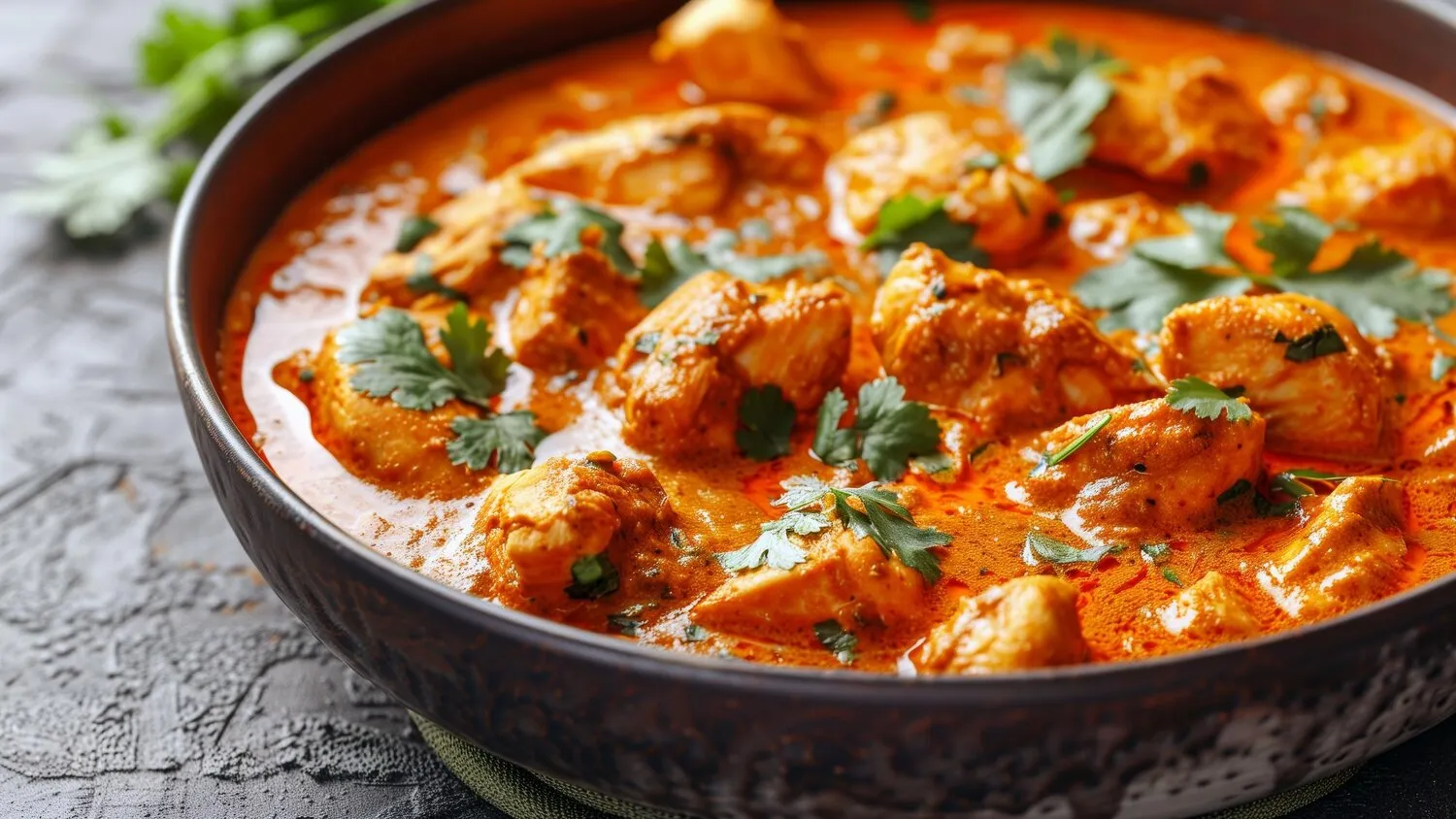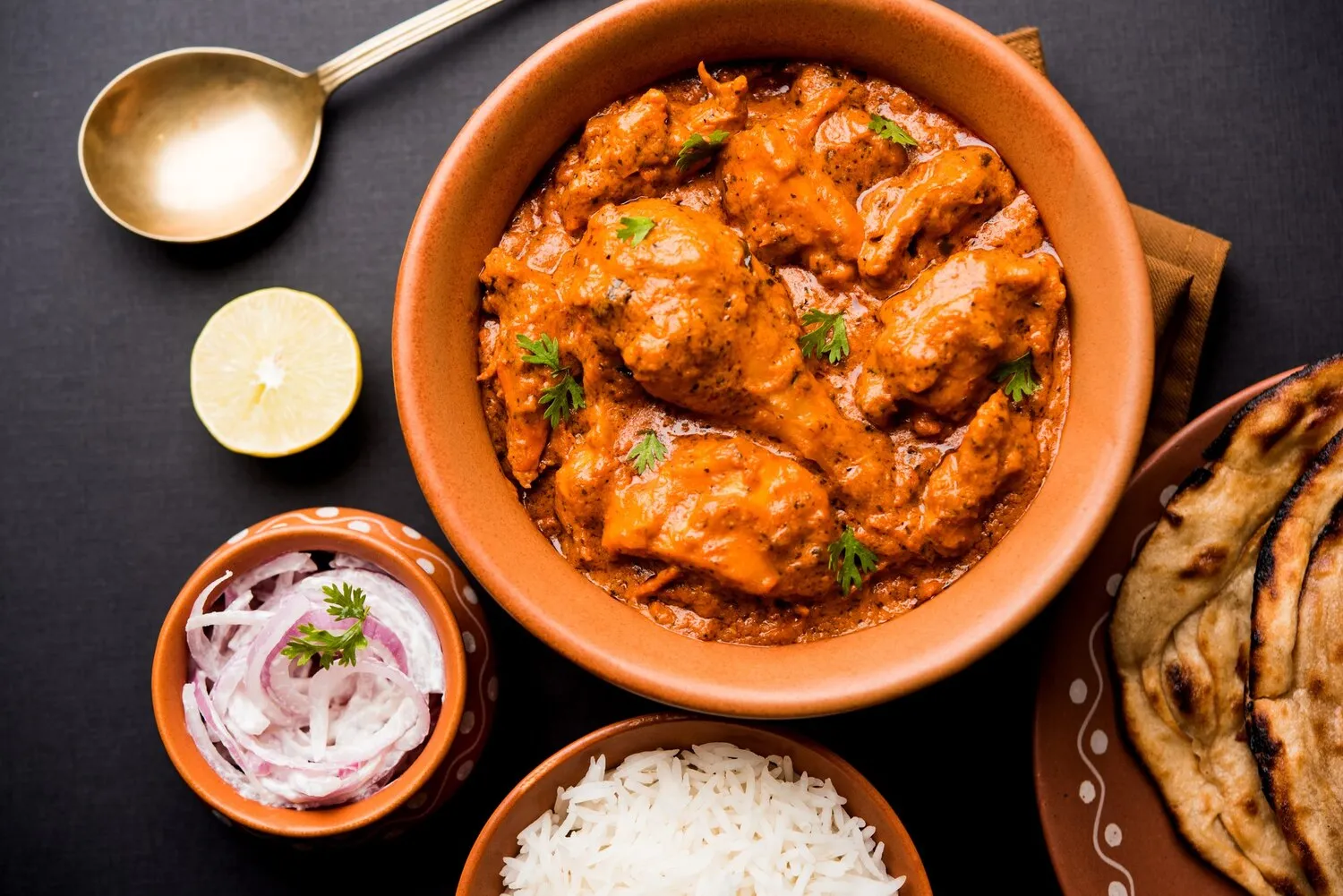
Biryani
Aromatic rice dish made with spices, rice and meat (chicken or lamb) or vegetables.
Nutrition Facts
* The % Daily Value (DV) tells you how much a nutrient in a serving of food contributes to a daily diet. 2,000 calories a day is used for general nutrition advice.
Biryani's origins are debated, with theories suggesting Persian influence brought to India by the Mughals. Some believe it evolved from pulao, while others claim it was a complete innovation. Regardless, it flourished under Mughal patronage, becoming a dish associated with royalty and special occasions.
Biryani holds significant cultural importance in India and surrounding regions, often served during celebrations, weddings, and religious festivals. It's more than just a meal; it's a symbol of hospitality, generosity, and communal feasting.
Celebratory Dish
Biryani is a staple at weddings, Eid celebrations, and other special occasions, signifying abundance and joy.
Regional Variations
Different regions in India boast their own unique biryani styles, reflecting local ingredients and culinary traditions. For example, Hyderabadi biryani is known for its intense flavors and slow-cooked meat, while Lucknowi biryani is more subtle and aromatic.
Status Symbol
Historically, biryani was associated with wealth and royalty. Even today, serving biryani can be seen as a sign of generosity and abundance.
Biryani is a symphony of flavors, balancing savory, aromatic, and spicy elements. The key is the layering of ingredients and the slow-cooking process, allowing flavors to meld and intensify.
The main flavors derive from the combination of fragrant basmati rice, marinated meat (chicken, lamb, or shrimp) or vegetables, and a complex blend of spices like saffron, cardamom, cloves, cinnamon, bay leaves, and ginger-garlic paste. Yogurt, caramelized onions (birista), and mint or cilantro add further depth and complexity. The slow-cooking method, often using the 'dum' technique (sealing the pot and cooking over low heat), ensures the rice is perfectly cooked and the flavors are fully integrated.
Rice Selection
Use high-quality aged basmati rice for the best texture and aroma. Soak the rice for at least 30 minutes before cooking.
Marination is Key
Marinate the meat or vegetables for several hours, or even overnight, to allow the flavors to penetrate deeply.
The Dum Technique
Mastering the 'dum' cooking method is crucial for a perfect biryani. Seal the pot tightly with dough or foil to trap the steam and allow the flavors to meld evenly. Cook on low heat for a long time.
Saffron Infusion
Infuse saffron strands in warm milk or water to release their color and aroma. Drizzle this saffron infusion over the rice before layering the biryani.
Explore additional Indian dishes and restaurants
Explore IndianDiscover top dining spots and culinary experiences in Wellington.
Explore WellingtonLearn more about the food culture, restaurant scene, and culinary heritage of New Zealand.
Explore New Zealand
